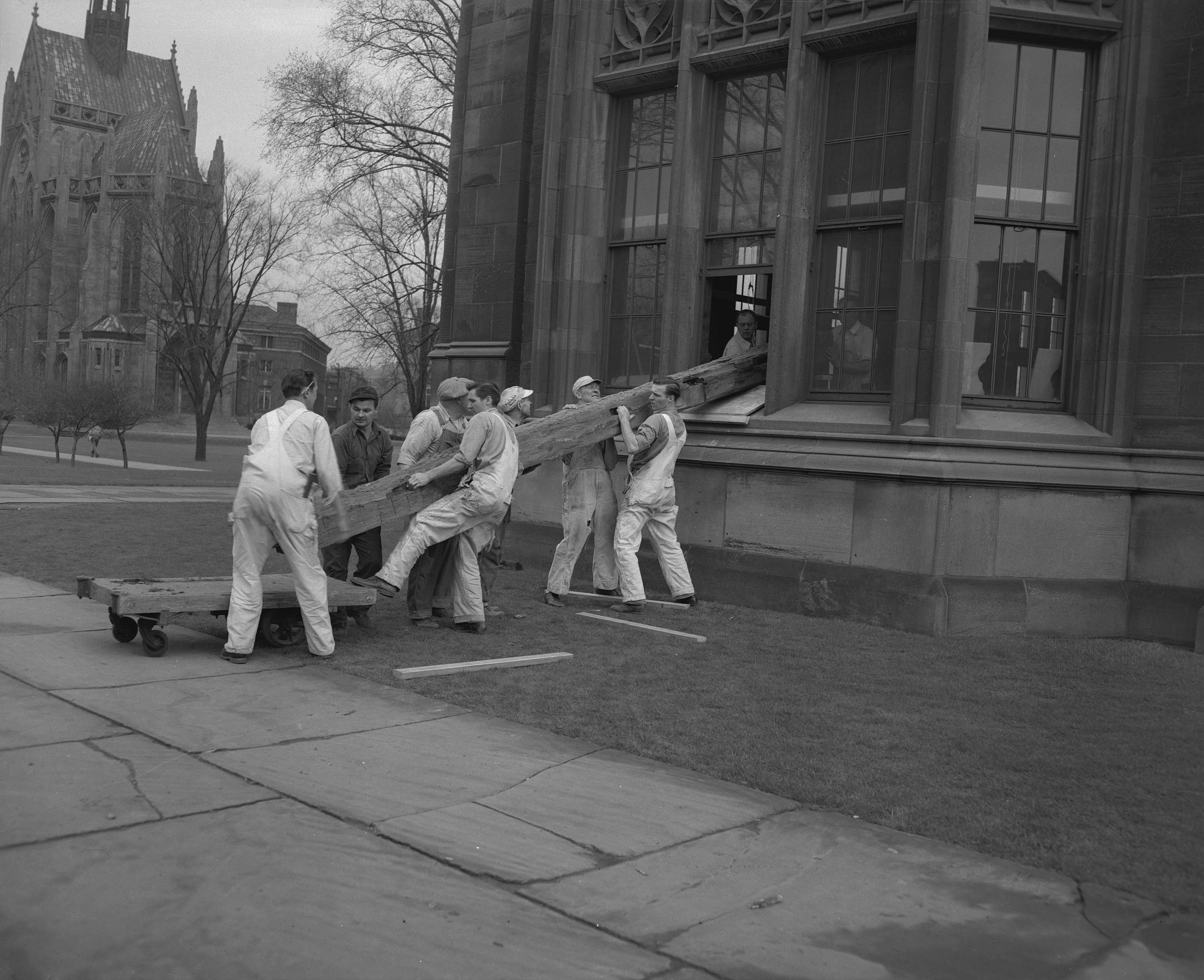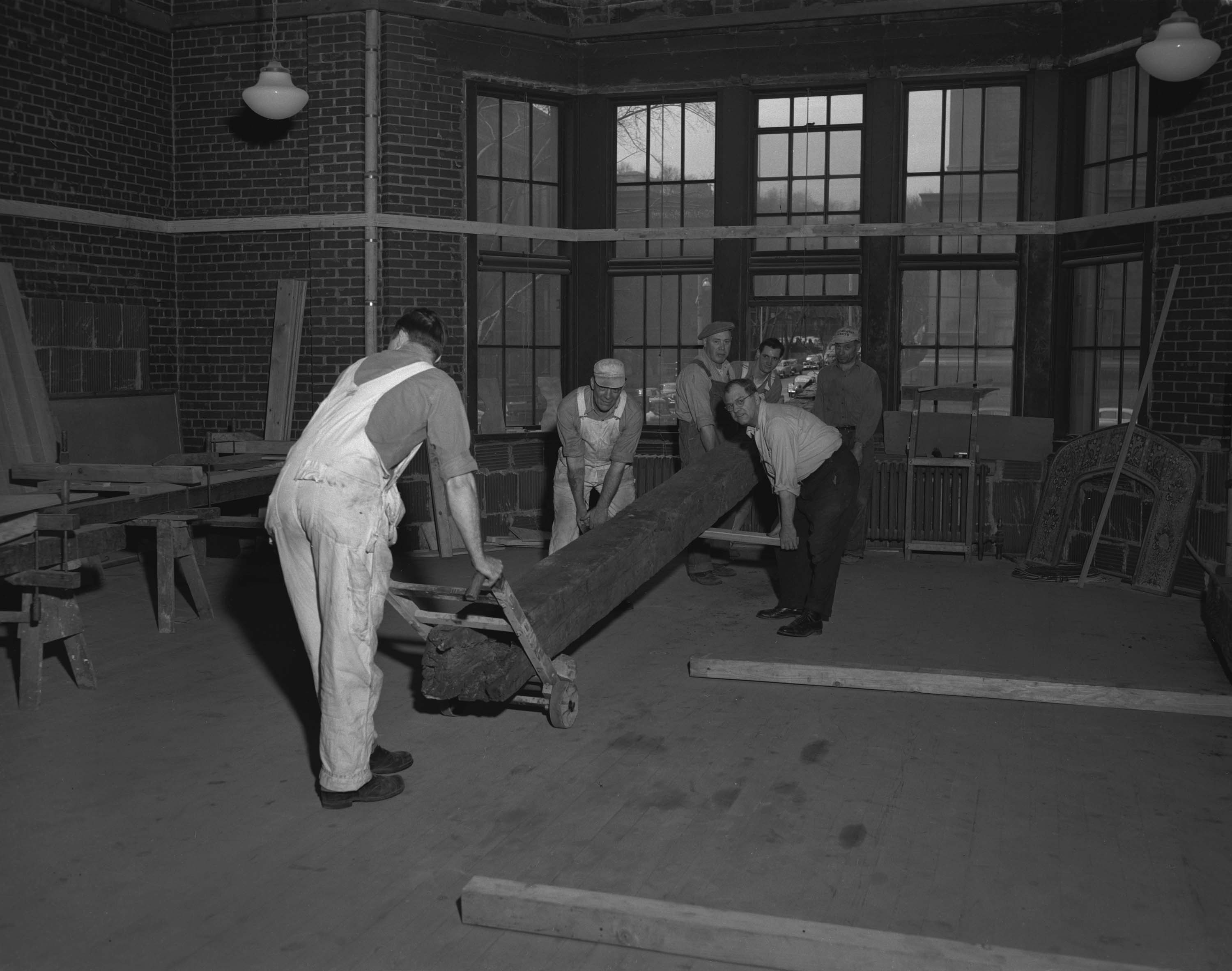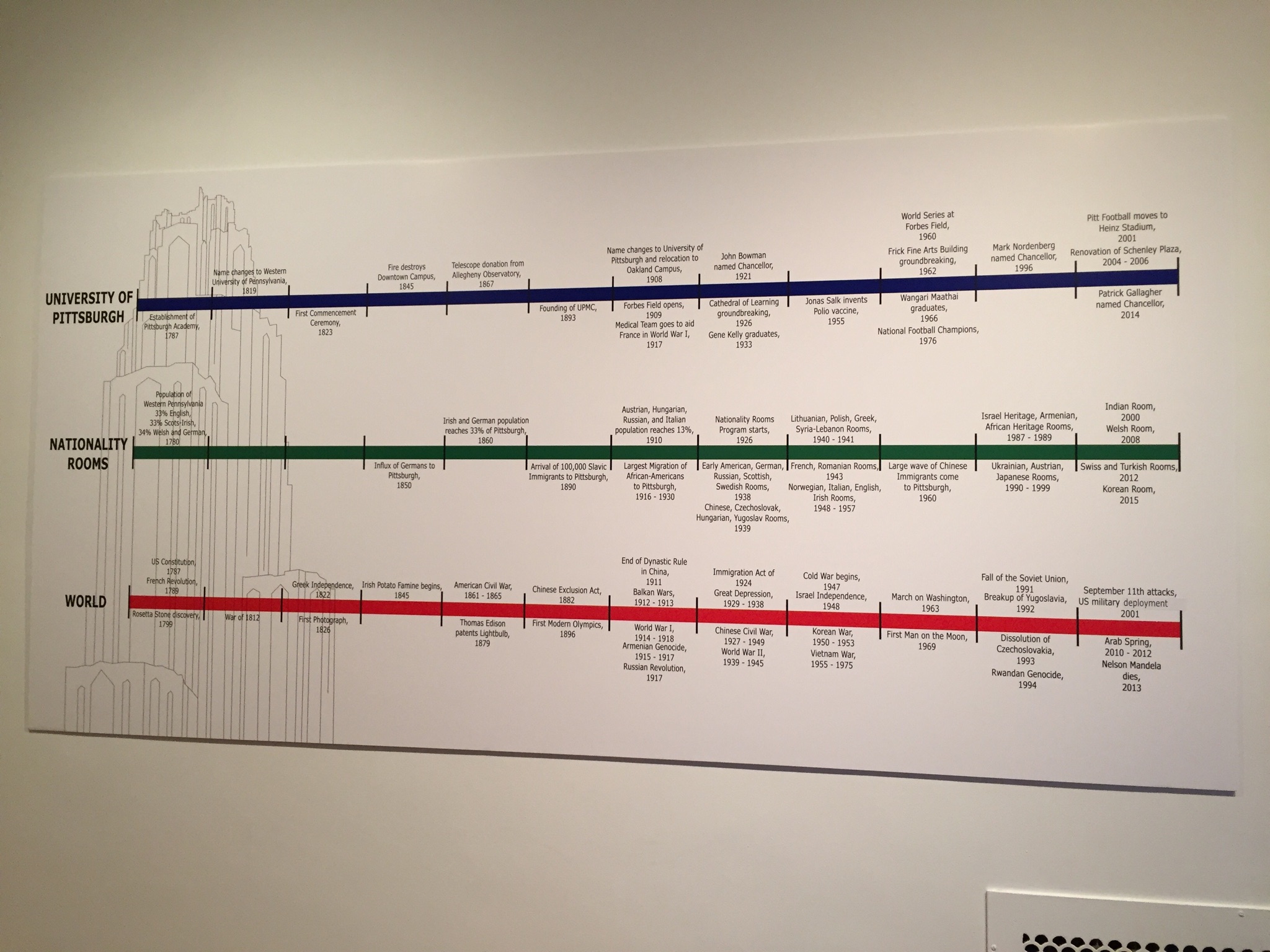Darcy Foster, 14 November 2017
The Narratives of the Nationality Rooms: Identity and Immigration in Pittsburgh exhibit is the result of the careful work of about thirty students throughout two months. However, no matter how carefully plans are laid, they often go awry anyway. Working as a member of the visual knowledge team, which was responsible for curating in the front gallery, I picked a photograph of six men carrying a beam through the window of the English Room (Fig. 1). I found the photograph interesting because it shows the progress the room made. This is especially evident because it is juxtaposed with the Wratten & Godfrey architectural drawings for the English Room, which are in a display case underneath the photograph. The drawings show the original vision for the room, which evolved greatly by the time it was made. When I submitted a loan request to include a scan of the photograph in the exhibition, there were multiple photographs that fit the description on the request. A similar photograph to the one I requested (Fig. 2) showed up at the exhibition, but it was not the correct one. It did not show the inside of the English Room, but the scan (Fig. 2) instead was shot from the outside of the Cathedral of Learning, so Heinz Memorial Chapel is visible in the background. Heinz Chapel was dedicated in 1938, and the English Room was dedicated in 1952 after construction was postponed during the World War II. Heinz Chapel is such a staple on campus today that it is interesting to look at it in this perspective. The English Room was at the start of construction, and so in the picture, Heinz Chapel is at most about a decade old. It would have been considered a very new building.
Originally, I chose the photograph of the inside of the classroom (Fig.1) because it showed the interior of the English Room before it was transformed into the way the room looks
today. The brick interior in the photograph is also a surprising contrast to the inside of the Cathedral of Learning. The brick of the English Room would eventually be covered by paneling that was one of the gifts from the British government to the English Room committee after the House of Commons in London was bombed in 1941. A theme of conflict was eminent in the visual knowledge group’s front gallery because many of the Nationality Rooms were created in response to conflict.
The University Library System, who provided the scans, was able to send the original photograph (Fig. 1) that I chose, so we decided to keep the extra scan (Fig. 2), which featured the same beam being passed through the English Room window. I adjusted my label to incorporate both scans, but it was actually a blessing that the wrong scan had been sent to us. Due to the fact that the photographs are exhibited in the front gallery, there is a direct tie to another part of the space: a timeline (Fig. 3). The timeline is broken into three different lines, and each one shows events that have occurred since the founding of the university. The lines from top to bottom represent events in the histories of the university, the Nationality Rooms, and the world in general. The visual knowledge group included events that affected each other to see how the Rooms have developed and been shaped over time. The addition of my second and accidental photograph allowed me to show the many different projects going on at the time and the quick expansion of the university’s properties. Previously, I had only connected the original photograph with world conflict (World War II), but this accident helped me to relate the photographs even more to our exhibit and to the growth of the university.



